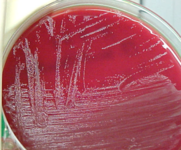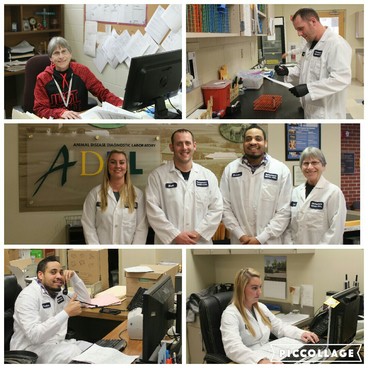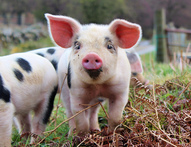 Next Generation Sequencing Services Available at ADDL
Next generation sequencing (NGS) is a new technology that provides the sequencing of DNA and RNA much more quickly and cheaply than the previously used Sanger sequencing method. NGS has revolutionised the study of genomics and molecular biology. At ADDL, we use an Illumina MiSeq instrument to perform NGS for emerging/re-emerging viral pathogens. Viral pathogens tested include porcine epidemic diarrhea virus, porcine deltacoronavirus virus, porcine reproductive and respiratory syndrome virus, as well as influenza viruses. The ADDL also provides NGS for bacteria. Bacterial NGS is becoming affordable and has demonstrated better resolution than more conventional pathogen subtyping and characterization methods such as real-time PCR, phage typing, multilocus variable number tandem-repeat analysis (MLVA), pulsed-field gel electrophoresis (PFGE) and disc diffusion susceptibility testing. The ADDL offers a broad range of NGS bioinformatics services for bacteria including sequence assembly, annotation, SNP analysis, cgMLST, detection of virulent and antimicrobial resistance genes, and Salmonella spp. serotyping, to name a few. To learn more about NGS services offered, call the ADDL at 614-728-6220 or e-mail us (animal@agri.ohio.gov).

Brucella canis Update
As of February 2016, ADDL has tested more than 8,000 canine serum samples for the presence of B. canis antibodies. The serum testing system used includes an indirect fluorescent antibody (IFA) screening test followed by a confirmatory tube agglutination test (TAT). Less than 1% of the serum samples tested have been positive using this two assay testing system. The lab has also performed necropsies and cultures on over 80 dogs. To date, 100 % of the dogs which were culture positive were also positive on the serum testing system. This suggests that the testing system is highly sensitive and specific. Importantly, we have found that the RSAT card test which is available for use in clinics, may produce false negative or false positive results, when compared with the two assay serum test system used at the ADDL. We recommend that all serum samples which test suspect or positive for B. canis using the RSAT assay be sent to the ADDL for confirmatory testing.
To learn more about the Ohio Commercial Dog Breeders Act that requires B. canis testing of high-volume dog breeders, please visit our website or call the Lab at 614-728-6220 or e-mail us (animal@agri.ohio.gov).
|
Pathology Case Report: Bovine Respiratory Disease Complex in a Heifer Calf
ADDL received a dead Holstein heifer calf from a herd that had experienced the loss of 10 head of cattle with signs of respiratory disease. Necropsy of the calf revealed bilateral consolidation of the cranioventral lung fields, with pus/purulent discharge noted in the airways. Fresh and formalin-fixed lung tissue were submitted for a bovine respiratory disease diagnostic workup. Histopathology of multiple lung sections showed severe, chronic suppurative bronchopneumonia, with bronchiolitis obliterans, and other changes suggestive of a viral etiology including hyaline membranes, type II pneumocyte hyperplasia, and necrotizing bronchiolitis with epithelial hyperplasia. These results were consistent with microbiology results including isolation of Mannheimia (Pasteurella) haemolytica, Pasteurella multocida, Trueperella pyogenes, and Mycoplasma sp. Other microscopic findings suggested an antecedent viral infection such as BRSV or PI3. However, PCR testing for BRSV nucleic acid and FA tests for BVD, IBR, BRSV and PI3 were negative. Chronicity of lesions may have resulted in loss of antigen/nucleic acid, accounting for the negative FA and PCR test results.
This case highlights two important issues:
(1) the complex nature of bovine respiratory disease (BRD), with bronchopneumonia being associated with multiple opportunistic infections, likely following an initial virus insult to the respiratory tract, and;
(2) the need for good management practices (good nutrition and ventilation, minimizing transport/social/environmental stressors, vaccinations, parasite control) to mitigate respiratory disease associated with multiple agents.
ADDL offers respiratory diagnostic panels at reduced rates for bovine, porcine, ovine, caprine and equine species to test for common pathogens associated with respiratory disease. Please visit our website or call us at 614-728-6220 to learn more about all of our diagnostic panels, including abortion, respiratory and enteric panels.
 Left: Relatively normal bronchiole with large open lumen; Right: Marked bronchiolitis obliterans with tufts of fibrous connective tissue lined by attenuated epithelial cells, protruding and subdividing lumen into small slits. Original magnification is 200X for each image.
 Meet the Central Receiving Staff
Central
Receiving members are Molly Corbin, Matt Shinkle, Brandon Burton and Supervisor, Linda
Barber. The Section's focus is on customer service
and sample submission data entry. The section's
nickname is the “Hub” because samples must be accurately and quickly logged into the database system in Central Receiving
before being dispersed into the laboratory. Personnel in the section respond to client calls and assist in sample
preparation to other ADDL sections when needed. The Supervisor, Linda Barber,
functions as a customer service liaison for clients who have special needs or
concerns regarding on-going cases.
Molecular Diagnostics Update
 Sequencing for swine influenza virus of the hemagglutinin and neuraminidase genes is now available at ADDL. Sample types include oral fluids, swabs and lung tissue with a turnaround time of 3-5 days. If necessary, avian influenza samples may also be sequenced using this method. In addition, ADDL also provide whole genome sequencing for type A influenza virus based on request. Contact the Virology Laboratory at 614-728-6220 for additional information.
|
|